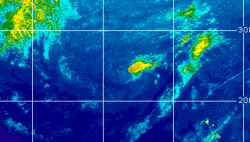Erythema, a common dermatological symptom characterized by redness of the skin, can occur for various reasons. It is not a disease itself but a signal of underlying conditions, ranging from minor irritations to systemic health issues. Different types of erythema have unique causes, symptoms, and implications. This article explores the primary types of erythema to help you understand their distinctions and significance.
1. Erythema Multiforme
Overview: Erythema multiforme is a hypersensitivity reaction, often triggered by infections or medications. It commonly affects the skin and mucous membranes.
Symptoms:
Red, target-shaped lesions that may be itchy or painful.
Blisters or ulcers in severe cases.
Affects extremities, torso, and sometimes the face.
Causes:
Viral infections, such as herpes simplex.
Certain medications, including antibiotics and anti-epileptic drugs.
Treatment:
Treat the underlying cause (e.g., antiviral medications for herpes).
Use corticosteroids or antihistamines for symptom relief.
2. Erythema Nodosum
Overview: This type presents as red, tender lumps, usually located on the shins. It is often associated with systemic conditions.
Symptoms:
Painful, raised nodules that feel warm to the touch.
Often accompanied by fever or fatigue.
Causes:
Infections (e.g., streptococcal infections, tuberculosis).
Medications (e.g., oral contraceptives).
Autoimmune diseases (e.g., inflammatory bowel disease).
Treatment:
Address the underlying cause (e.g., antibiotics for infections).
Anti-inflammatory medications to reduce swelling and pain.
Rest and elevation to alleviate symptoms.
3. Erythema Marginatum
Overview: A rare form of erythema associated with rheumatic fever, presenting as ring-shaped patches on the skin.
Symptoms:
Red, ring-like lesions with clear centers.
Painless and typically non-itchy.
Appears on the trunk or inner surfaces of the limbs.
Causes:
Associated with rheumatic fever, often following untreated streptococcal throat infections.
Treatment:
Address rheumatic fever with antibiotics and anti-inflammatory medications.
Long-term care to prevent recurrence.
4. Erythema Infectiosum (Fifth Disease)
Overview: A viral infection commonly affecting children, caused by parvovirus B19.
Symptoms:
A "slapped cheek" appearance with bright red patches on the face.
A lacy rash on the arms, legs, or torso.
Mild fever and cold-like symptoms.
Causes:
Transmission through respiratory droplets or direct contact.
Treatment:
Usually self-limiting; supportive care like hydration and fever reducers is sufficient.
|



 Flat
Flat


